Salt Museums
1. Salt museum of Bulgaria
A museum, unique for Bulgaria
The place is located by the Pomorie salt lake and the salt fields, which once were covering a much, much bigger part of the area. The museum presents the history of the salt production in Pomorie, describes the way the salt is produced and gives an insight of the curing capabilities of additional products from the lake – like mud. Currently the entrance fee is 2 leva and you can pay a few additional leva for a guided tour. I highly recommend the guided tour.


.
 .
.2. Salt museum of New York, usa


Discover the industry that created the City of Syracuse and supplied the entire nation with salt! Explore the site of an original boiling block where brine (salt water) was turned into what was then considered one of the country’s most precious commodities. See the actual kettles, wooden barrels and other equipment that were used in this fascinating process which came to an end in the 1920’s.
The museum, located on the shore of Onondaga Lake, is full of dynamic exhibits and artifacts. Constructed from timbers taken from actual salt warehouses, it provides an old time rustic experience during your visit.
Gift shop, operated by the Friends of Historic Onondaga Lake, visitor information center and picnic areas on location.

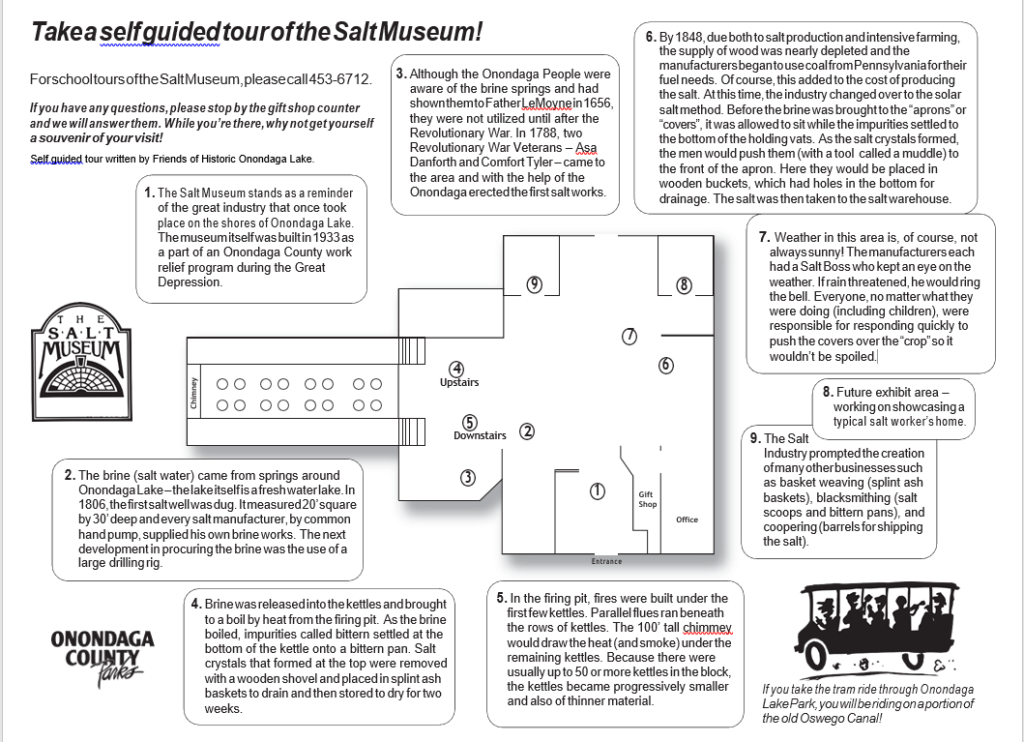
3. MUSEUM OF THE SALINAS DEL CARMEN, Spain
 The Salinas del Carmen are the only salt flats in Fuerteventura that are still in operation . They occupy 26,100 m2 and are formed by 10 cookers and almost 1000 pitches. Located on the Costa de Antigua, in its enclosure is also the Museum, integrated between the saline facilities, which include the salt store, the house of the salinero and the remains of the old jetty.
The Salinas del Carmen are the only salt flats in Fuerteventura that are still in operation . They occupy 26,100 m2 and are formed by 10 cookers and almost 1000 pitches. Located on the Costa de Antigua, in its enclosure is also the Museum, integrated between the saline facilities, which include the salt store, the house of the salinero and the remains of the old jetty.

On your visit you can be a saltman for a day and soak up the trade Do you know that Salinas del Carmen produces one of the highest quality salts due to the cleanliness of its waters? In addition, the peculiar way of obtaining the “foam” sea salt together with the traditional daily batting, get a white salt of fine grain very rich in trace elements. We invite you to our house and to know our treasures.
Barrio Las Salinas, 2, 35610 Antigua, Las Palmas,spain
4. Museum and House of salt Croatia
The Saline Nin is visited annually by 70,000-100,000 people. The whole saline is a magical museum. It is over 1500 years old. The Roman gate, stones from the Illyrian time, the Bora of the Velebit, the medicinal mud, over 200 bird species and ancient tools testify about it. The saline tells a story about salt throughout the history, wars, celebrations, love, joy and work. During this time many things have changed, but one thing remained unchanged. The salt is just as before gathered with hands with lots of love and joy. Over the generations the saline fields from Nin give the best of the sun, the Adriatic Sea and the Bora of Velebit.

A museum and a salt house are part of the Saline. You can see here black and white photos from the past, old tools for work, wagons that served as means of transport for the salt from the salt pans to the salt depository, but at the same time you can play an interactive game, see a model of the unique nature reserve and a documentary film, which is played in Croatian, German and English.

Immerse into the fascinating museum of the only ecological saline on the Adriatic. It will inspire you with words, images and acts, but you will also learn something about the difficult and valuable things to be preserved for the next generations … Dive into our history of salt. Your Saline Nin.

Open days
Every year we open the doors for visitors in June, July and August. In this way, we want to show and to demonstrate visitors the history of the natural production of white gold. Visitors will be able to enjoy the guided tours free of charge until late in the evening.

Salt festival
The salt festival is a traditional event that takes place every year in August. A series of events throughout the day give visitors the opportunity to participate in salt production, from creative workshops for children to traditional salt collection with hands, where all people from 9 to 99 years can participate and a free tour with expert guidance.
Ilirska cesta 7, 23232 Nin, Croatia
http://www.solananin.hr/
5. Museum of salt Trapani, Italy
The salt museum, in the Nubia district, municipality of Paceco (TP), was created by the will of its owner, Alberto Culcasi, thanks to the funding of the provincial tourism company of Trapani and the municipality of Paceco and with the collaboration of the faculties of Letters and Architecture of the University of Palermo.



Inserted in the official guide of the European Union dedicated to the museums of the Mediterranean, it is placed along the route called the Via del Sale, a tourist-cultural project born with the aim of enhancing that particular humid environment that characterizes with the salt pans and mills the coastal area of western Sicily. Located inside a baglio, an ancient seventeenth-century farm-fortress used for salt milling, with the large windmill attached, Inside, between the stone walls, the terracotta floor and the ancient painted doors, it is possible to admire on display original finds accompanied by numerous information-rich cards and reconstruction panels for phases of the work cycle: the old rolls to compact the bottom of the salt pans, the chairs or the baskets to transport the salt, the wooden blades of the mills (ntinni), the Archimede spiral or screw to suck the water of the tank called “fridda”, the wooden strips (tagghia) for measure the salt, the jute bags, the barrel wagon that attached to the mule shuttled between one tank and the other to quench the salt pans, the heavy millstone that allowed to refine the salt, the nets and the pots, from the moment precious fish such as sea bream and sea bass are bred in the salt ponds. Working tools now disused and which now constitute a relic of industrial archeology.

The famous Salt Museum of Trapani is located in the middle of the Saline Nature Reserve of Trapani. It is a private business, run by the Culcasi family, situated along the route known as the Salt Road, a tourist and cultural project created with the intent of enhancing the coastal area of West Sicily, with its particular moist environment, salt pits and mills.
The museum is located inside a former farm of the Seventeenth century, which was used for the grinding of salt, thanks to its large windmill. It collects and preserves the ancient tools used by people working there and also a rich documentation of vintage photos. Thanks to a guided tour, visitors can discover the stages of processing salt as it has developed over the centuries and admire the exhibition of original artifacts, all accompanied by detailed data sheets and panels illustrating the different work cycle phases.

Among the most characteristic objects you can find in the Salt Museum of Trapani, there are the old machineries used to compact the bottom of the salt marshes, the “cattedri” or baskets to carry the salt, the wooden paddles of the old mills otherwise called “ntinni,” the spiral or Archimedes’ screw (“fridda”) to suck the water out of the tank, the wooden strips or “tagghia” to measure salt, and also jute bags. Then there is the wagon-barrel, which was attached to a mule and used to carry water to the workers from one tank to another. Other objects include the heavy millstone used in the refining process, and even nets and traps, since quality fishes such as sea breams and sea basses are breed in these salt pools. In conclusion, you’ll find working tools now almost entirely obsolete, but extremely valuable for industrial archeology.
From the Salt Museum of Trapani you can also enjoy a unique view over the Egadi Islands and the charming Erice, and enjoy the fantastic sunsets over the salt pits. The archaeological sites of Motya and Selinunte are also nearby.
http://www.museodelsale.it/
6. Kansas Underground Salt Museum, USA

The effort to bring Strataca to the public began in 1999, and required the cooperation of the Reno County Historical Society, the Hutchinson Salt Company, and Underground Vaults and Storage. Together, they raised money and pooled resources, culminating in the establishment of Strataca and it’s attractions.

Strataca/The Kansas Underground Salt Museum is one of the 8 Wonders of Kansas. Located 650 feet beneath the earth’s surface in a salt bed formed 275 million years ago during the Permian Period, Strataca is a truly unique destination.

Experience the Dark Ride, the Salt Mine Express Train and the new Salt Safari
Mine Adventure Hike, all in over 300,000 square feet of mined out caverns in an active Salt Mine. Reserve the Stratacenter for beautiful and unique events and conference space.
https://www.underkansas.org/explore
7. The Wieliczka Salt Mine, southern Poland

The “Wieliczka” Salt Mine is one of the most valuable monuments of material and spiritual culture in Poland. Each year it is visited by more than one million tourists from all over the world.
It is also a world class monument, featuring among twelve objects on the UNESCO’s World Cultural and Natural Heritage List. Today, the “Wieliczka” Salt Mine combines many centuries of tradition and modernity, the history of several hundred years and an underground metropolis with extensive infrastructure.
The mine is a product of work of tens of generations of miners, a monument to the history of Poland and to the Polish nation – a brand, present in Polish consciousness for centuries.

Sól, solić, solanka, solniczka, słonina, słota, but also rosół (or rozsół, that is, simply speaking, salted water). Salt not only enriched the flavour of food, but the purse of a merchant trading in it. In German Salz, in Greek hals. Vitae sal amicita – Friendship is the salt of life as Romans proclaimed in the past.
As the Polish saying has it – to know somebody, you must eat a barrel of salt together and, after all, it is work that is the salt of life. Salt has been an inseparable companion of humankind, however, this sentence can be reversed. After all, it is so much older than the humankind itself. The salt in Wieliczka is nearly fourteen million years old. It falls in the category of Miocene salt-bearing series consisting of rock salt deposits and (to a significantly smaller degree) potassium-magnesium salts. They stretch along the arch of the Carpathians, starting in the area of Silesia to carry on as far as the Iron Gate region of Romania.
The Wieliczka salt deposit was formed over thousands of years as a result of multiple processes. It has a diversified and unique geological structure. The deposit is formed of two different parts – the upper and the lower one. The upper block or lump deposit was formed as marly claystone and claystone with halite crystals (called zubry) with plugs of rock salt, known as green, located between them. The lower deposit consists of layers of rock salts alternating with interlayers of gangue – it is a bedded deposit.
To the south, the Wieliczka deposit borders with Carpathian flysh formations. Its northern limit and, partly, overburden consist of Machow formations (Chodenice layers). Subsalt rocks are Skawina formations (Skawina layers). The deposit is surrounded with the lagging of claystone and gypsum and covered with quaternary formations.
To the west, the Wieliczka deposit undergoes gradual transition into the Barycz deposit while in the east into the Sulkow deposit, tested only with boreholes.

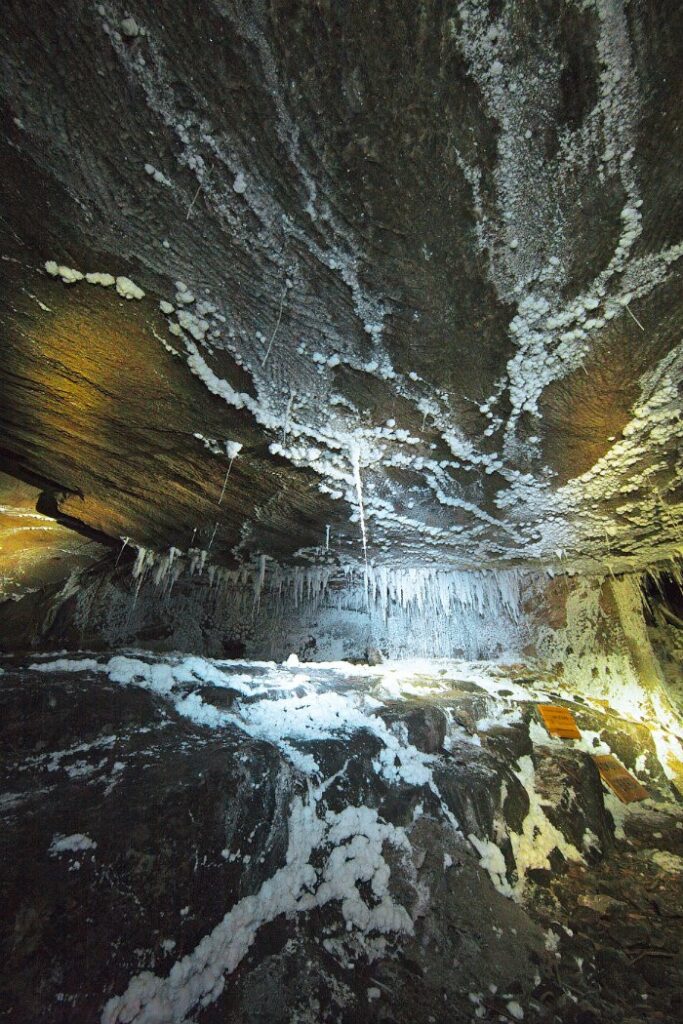
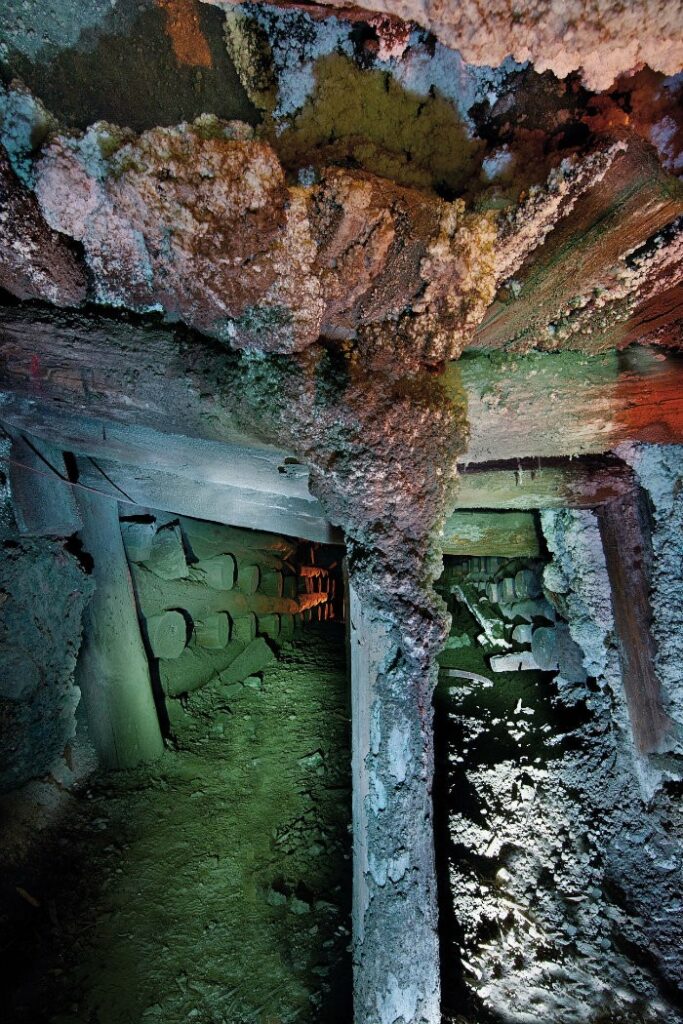
MUSEUM ROUTE
The visitors to the Wieliczka mine who moved past the Tourist Route can also set off for the Museum Route. We recommend this tour without hesitation: the Museum Route features types of objects and locations that cannot be seen on the Tourist Route
Sightseeing of both Routes does not entail any additional cost, they can be visited by the same ticket. What are the major features on the Museum Route? The giant horse powered hauling gears represent one of the chief attractions. The device known as the “Polish” is the world’s largest wooden mining machine! Lovers of arts and handicraft will surely be enchanted by paintings of Jan Matejko, the precious Horn of the Hewer Guild and a luxury train constructed for the top authorities of the Austria-Hungary Empire. The Museum Route also features smaller objects illustrating both work of historical Wieliczka miners, their customs and everyday life. There are also places that will attract attention of nature lovers, such as the exhibition of salt crystals from the famous Crystal Caves or amazing salt forms bringing back the memories of the world of fairy tales. Unforgettable impressions are also given by the monumental, beautiful chambers, including the Maria Teresa (Maria Theresa) Chamber (the largest in the mine) and the Saurau Chamber considered the most beautiful since the 19th century.
The Museum Route is located entirely on level III of the mine and is about 1.5 kilometres long. Sightseeing of the Route takes about 50 minutes.
Geological treasure

museum you can admire specimens of crystals, delicate salt hair, Christmas trees, stalactites and stalagmites. Their unusual shapes are the result of so-called secondary crystallization, which occurs where brine appears. You can also admire fragments of petrified plants and animals living a million years ago and everyday objects used by miners – beautiful watering cans, a broom or a ladder – covered with beautiful salt crystals.
Prehistorical saltworks

The model of prehistoric saltworks confirms that salt was already produced around Wieliczka six thousand years ago. This is documented by the discoveries of archaeologists who found traces of these skills of our neolithic ancestors. Thanks to this important discovery, Wieliczka was included in the oldest places in Europe that boasts salt production. And this one was very valuable and served as a money for centuries. The “brewing” of salt involves the evaporation of water from brine. In Wieliczka, fire was used for this purpose. The brine was boiled in large clay pots until a thick substance was obtained. Then it was transferred into smaller dishes in which it was dried.
Horn of the Hewer Guild

One of the most valuable objects in the Museum’s collection is the Horn of the Hewer Guild – made in 1534 on the order of the Seweryn Boner (mine manager) and donated to Wieliczka miners. It symbolizes the wealth of the mine and the hardships of the people working here, which is personified by kneeling Hercules. On the magnificent corner the round framed in silver features: the emblem of the Brotherhood of the Wieliczka Diggers and the coats of arms of the Jagiellonians, Sforza and the founder. This treasure was once presented only during the biggest ceremonies in Wieliczka, it was hung on a chain worn by the elder brotherhood. Today, the horn is the most “export” monument from the museum’s collection.
Enormous chambers

When visiting the Museum, the large chambers are impressive, from which lumps of salt were once extracted. The Saurau chamber is considered the most beautiful. It is also one of the highest cells visited in the mine (28 m). Due to its natural beauty used, it was offered to tourists as early as 1877 – almost immediately after using salt extraction in this area. Its attractive attraction is the meeting of miners on a rope to the mine – a scale model 1: 1. The huge chamber Maria Teresa is also beautiful, full of traces of torn lumps of salt, creating an unusual texture of the walls. It is so big that an eight-story tower block would fit here.
Painting and sculpture

Visitors can also admire two paintings by famous polish painter Jan Matejko. The master visited the salt underground in 1868, which was confirmed by an entry in the book of visitors. The effect of this trip is a portrait of Saint Kinga – the patron of salt miners, painted on the occasion of the 600th anniversary of her death. It surprised by the way the mining patron is depicted – not as a young, beautiful princess, known from legend, but praying against the backdrop of the Nowy Sącz mountains, at the end of her life. The second valuable painting by Jan Matejko in the museum’s collection shows the descend of the Andrzej Kościelecki and the Seweryn Bethman to the mine during the fire of 1510. The museum exhibitions are also decorated with sacred art works. Some of them were once the decor of the now-defunct mine chapels.
Antique machines

A unique part of the Museum Route is a collection of wooden treadmills – machines moved centuries ago by horses employed in the mine. These treasures of mining technology – such as the 17th-century Polish treadmill or the much younger Saxon and Hungarian treadmills – could carry two tons of load at once, and eight horses set them in motion. It wasn’t until the second half of the nineteenth century that they were replaced by steam engines, and then – electric ones. The 16-meter Polish treadmill is the oldest and largest machine that has survived to our times


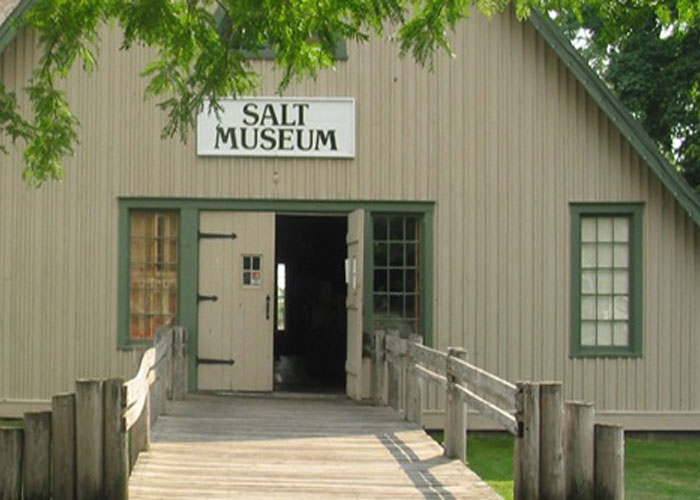


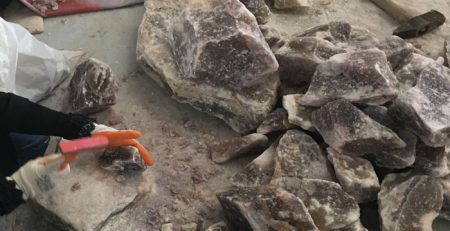

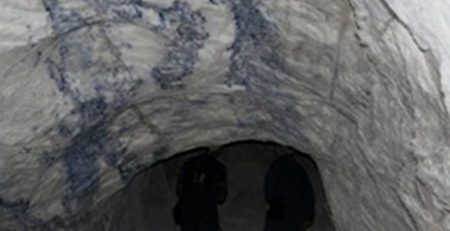
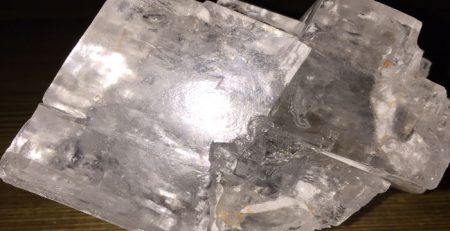
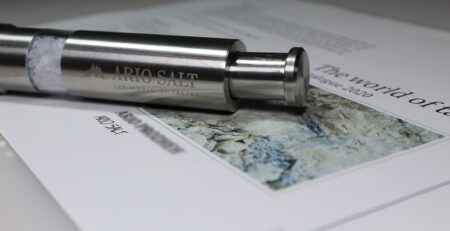
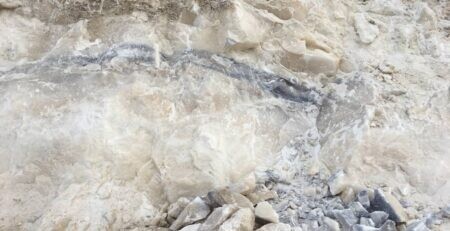
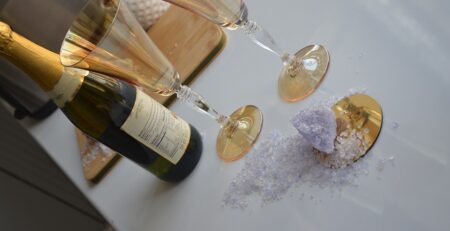
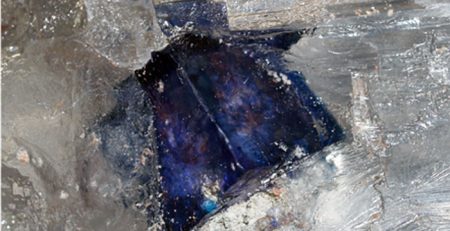
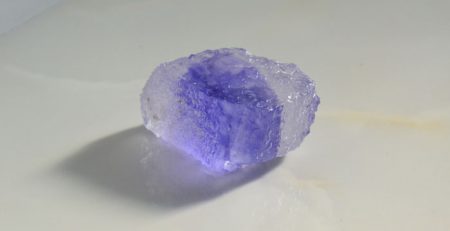
Comment (1)
Enjoyed this over view!
I would add a map near each location showing where it is in regards to the country. It is always helpfull!!